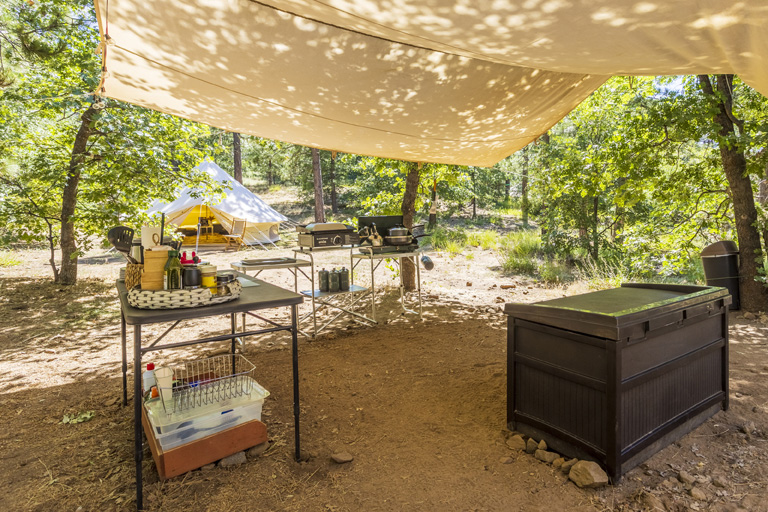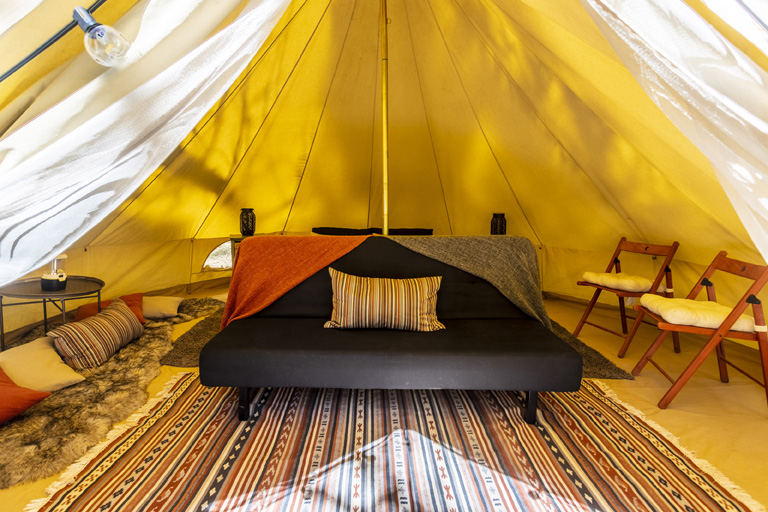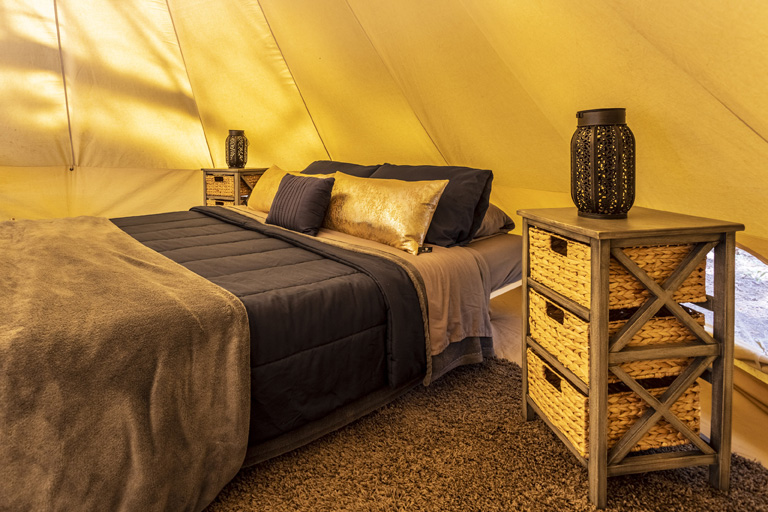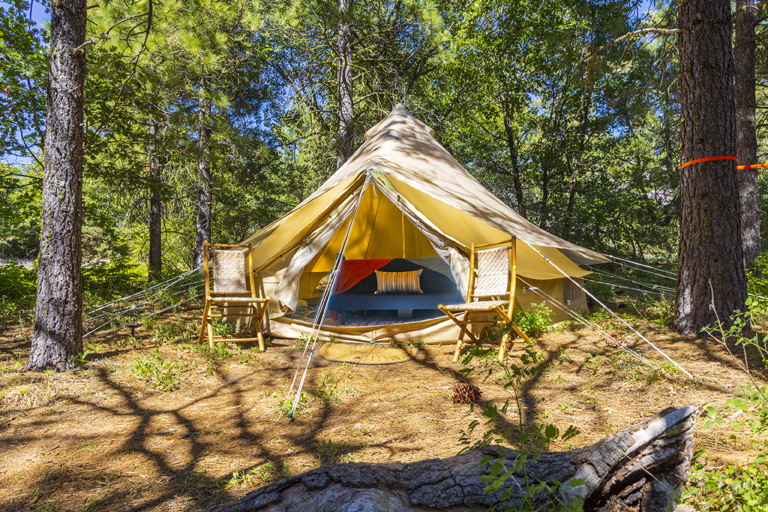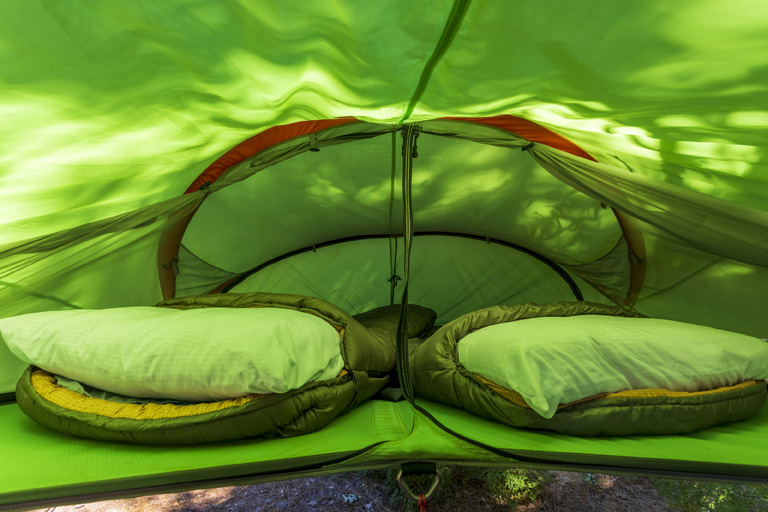The Cleveland National Forest, nestled in the bustling greater San Diego area, spans a modest 460,000 acres intersecting parts of Orange and Riverside Counties. Providing ample recreation, sprawling mountain vistas, and an abundance of wildlife and natural resources. It was designated a National Recreation Area by Presidential proclamation in 1926. El Prado Cabin was the first Ranger's cabin on the Cleveland National Forest and was built in 1911. The cabin is still standing today and is located in the Laguna Mountain Recreation Area, El Prado Campground.
The region is famous for its terrain that transitions from a desert environment to a mountain top conifer forest. The trails are fun to explore with picturesque scenery along the way. Within the recreation area is the Big Laguna Mountain Meadows & the Little Laguna Lake. It is forested with pines and oaks that provide plenty of shade, in addition to a meadow. The area is home to many species of birds, as well as the endangered Laguna Skipper butterfly. The Laguna Mountain Recreation Area is known for great horseback riding, mountain biking and hiking trails. Most famous of all is a segment of the 2,650-mile Pacific Crest Trail, which runs from California to the State of Washington. Wildflowers are usually abundant in April and May on the Big Laguna Trail, which takes visitors past Big Laguna Lake.
There are two restaurants - The Outpost and Pinehouse Cafe and Tavern, as well as a small general store. There are various accommodation options including; cabins, tiny homes and of course glamping with us. There's a visitor center, as well as Mount Laguna Outfitters that provides activities and recreation support.
History
Until the arrival in San Diego of Juan Rodriguez Cabrillo, the lands now within the Cleveland National Forest were known only to the desert and coastal Indian tribes who used them. The Kumeyaay, Luiseños, Cahuilla and Cupeño found a good living on the abundant acorns and game. Many of our trails today follow those routes first used by these early dwellers.
Cabrillo's arrival in 1542 had little affect on the area. It wasn't until 1769 that the Peninsular Range and its coastal plain attracted much interest. Fearing possible interference by England and possibly Russia, Spain encouraged Junípero Serra to establish his first of 21 California Missions.
The original site of the first mission was located near the present Old Town in San Diego.
Prior to the establishment of the missions, human impact on the land was relatively insignificant. The explorers Vizcaíno and Cabrillo reported that the native Indians did considerable burning of the brushlands along the coast and in the mountains, but the overall impact was probably not very great. However, with the arrival of a ranching culture, the landscape underwent more dramatic changes; subtle at first, as the native grasslands were slowly replaced by European and Asian weeds and other introduced plants. Some botanists argue that this invasion of exotic plants had more affect on the area than any other single factor.
Widespread overgrazing throughout the area, brush and trees cut for fence posts, and fires set to produce forage expanded the impact well beyond that of the Indians in the previous centuries.
In 1869, gold was discovered near Julian attracting hordes of miners from the Mother Lode and swelling the town to a population greater than that of San Diego. Also, during this period, zinc, lead, and silver mines were booming in the western canyons of the Santa Anas (hence, Silverado Canyon).
The influx of miners left its mark on the land. Trees were cut for mine timbers, heat and cooking fuel. Great expanses of brush were burned so miners could penetrate new areas to search for minerals.
As the mines petered out, so did many of the early ranches which had been overgrazed and had lost their chief labor force as the Indian population died off due to hardship and disease.
The principal end results was steadily growing threats to the watersheds, which by now were of critical importance to southern California communities.
Early reports from the 1870's - 1880's refer to fires that burned uncontrolled for weeks at a time. Lack of protection from fire was causing serious damage to irrigation works, the water supplies of rural areas, the small metropolitan area of San Diego, and other coastal towns of the late 1800's. The need for a forest reserve was evident to the first California Forestry Commission, appointed by Governor Stone in 1886. The commission recorded in its findings the necessity for special protection of the watershed cover to prevent the occurrence of major fires and subsequent erosion which were injuring the climate, agriculture and future prospects of southern California.
The widespread support for better resource management found a few opposing voices. Among these were timber and ranching interests who viewed the movement as leading to greater restriction on their activities.
Regardless, the Forest Reserve Act was passed in 1891. Although the Act was meant to slow wasteful and illegal timber cutting, the problem was different in southern California. It was to protect their watersheds that Californians immediately began demanding Forest Reserves.
Cleveland National Forest became one of the first in the new system and had its basis in the 50,000 acre Trabuco Cañon Forest Reserve (in the Santa Ana Mountains), created by President Harrison in February 1893. In February 1897 President Cleveland created San Jacinto Forest Reserve, a 700,000 acre area which included the desert lands southeast of Palomar Mountain. In 1899, the Trabuco Reserve was more than doubled, in response to a petition sent to the General Land Office by residents near Trabuco Canyon.
These early Forest Reserves had been administered by the General Land Office (GLO) in the U.S. Department of Interior. However, the GLO lacked any trained foresters to aggressively take charge. As a result in 1905 the reserves were transferred to a new Bureau of Forestry (now the Forest Service) in the U.S. Department of Agriculture. In 1907 their designation as Forest Reserves was changed to National Forests.
In 1907 President Roosevelt made extensive additions to both the Trabuco Canyon and San Jacinto Forest Reserves, to include Palomar and Laguna Mountains and those farther south to the Mexican Border. A year later (1908) President Roosevelt combined the two Reserves to form the new 1,904,826 acre Cleveland National Forest.
During the next seventeen years there were several deletions to the Cleveland. A major one in 1915 when 749,730 acres of non-forest value lands were returned to public entry, and another in 1925 when the San Jacinto unit was transferred to the San Bernardino National Forest. Today the Cleveland National Forest consists of approximately 424,000 acres of forest land.
Information provided here is courtesy of USDA Forest Service. For more info about the Cleveland National Forest, please visit their web-site.




















